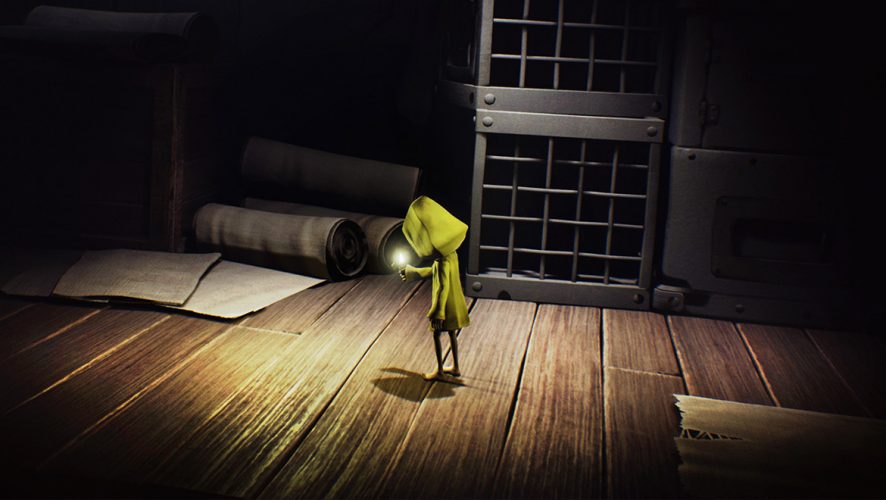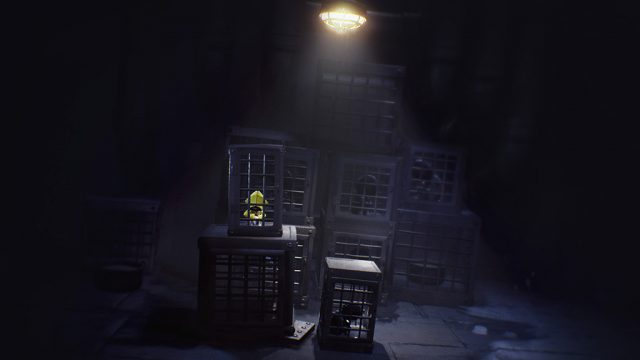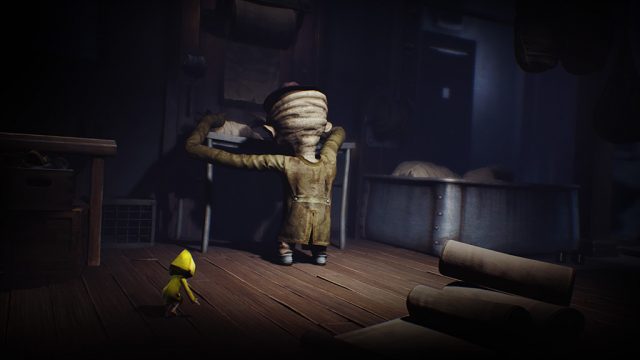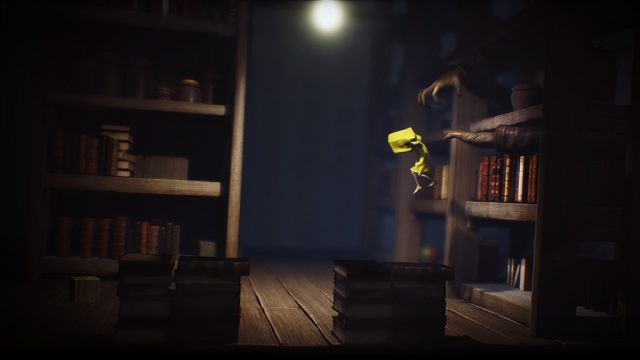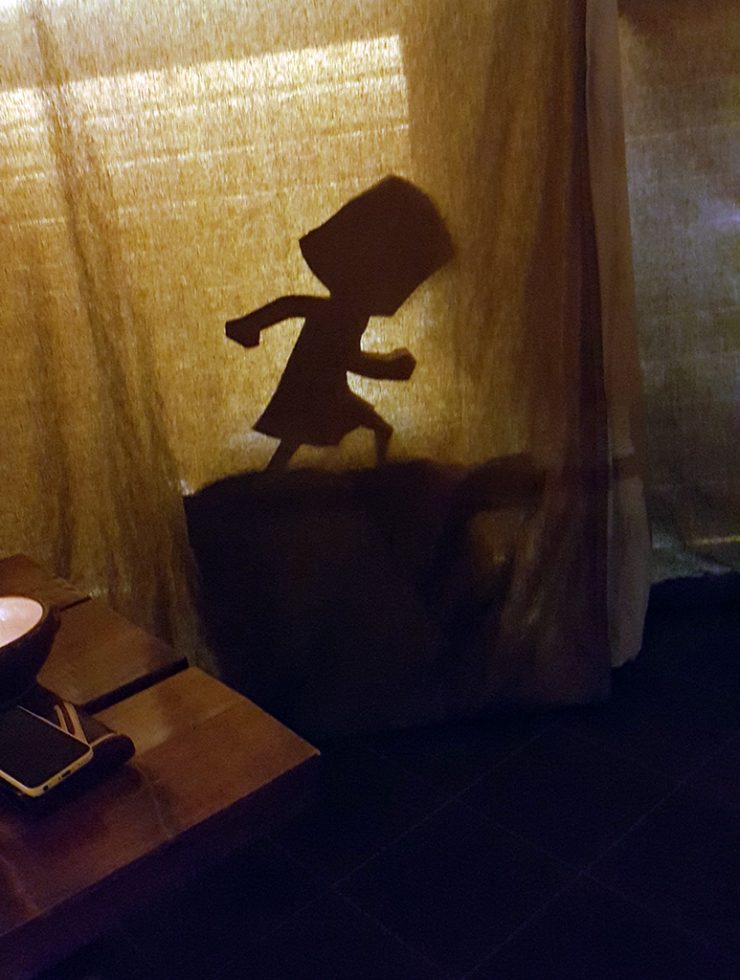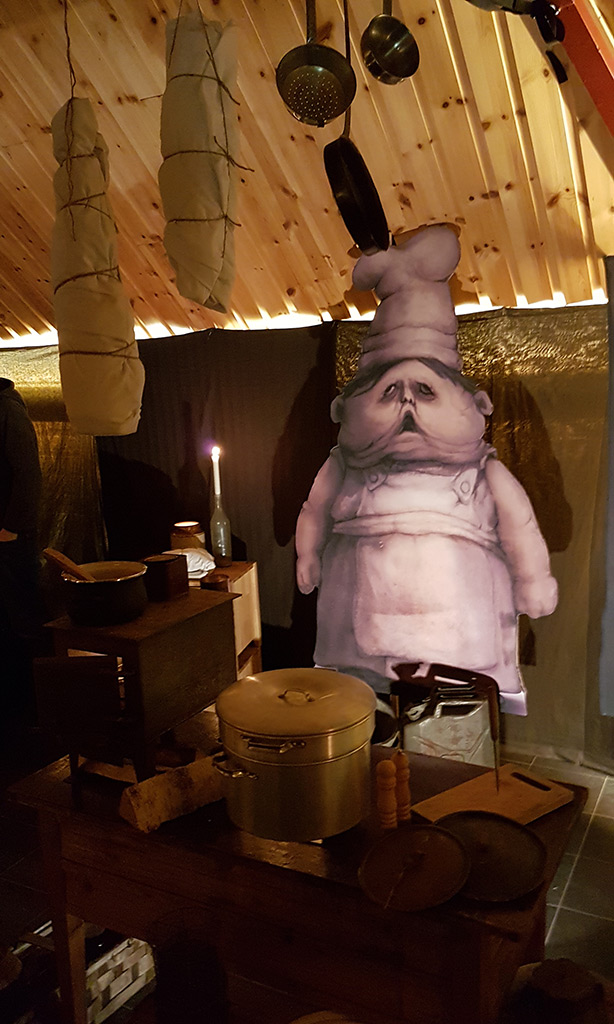Horror is in my blood. I’ve seen horror flicks of every type, and usually walk out of the cinema with a smile on my face. Heck, I breezed through the latest Resident Evil 7 game in under 9 hours, just because. And ever since I first saw the trailers and gameplay videos for Little Nightmares, I have been drawn by its dark, whimsical premise.
The use of physics-based puzzles in this dark platform adventure game is immediately reminiscent of Limbo (2010) and Inside (2016), both of which I adored and have completed. However, unlike the two, Little Nightmares has a more claymation-like art style to it, which perfectly captures the disturbing mood of the game.
Tarsier Studios, a Sweden-based indie developer, best known for their involvement with Sony’s LittleBigPlanet for the PS Vita, is now exploring the darker side of childhood, with a grim platforming, puzzle-solving adventure game. Despite the cartoony-like claymation animation, the game strikes a balance with the horror theme, by establishing a darker tone reminiscent of Tim Burton’s dreary gothic stylings. Anyone remember The Nightmare Before Christmas?
Attendees at last year’s Gamescom and Tokyo Game Show got a first taste of the game with a playable demo of “The Kitchen” level. It’s still playable now (somewhat) as a point-and-click demo adventure of sorts, on the official site here.
You can even score a free DLC while you’re at it! The short browser-based demo offers a decent taste of some of the puzzles and unique art style, via a series of interactive videos.
Hands-On Impressions
Thanks to Bandai Namco’s invite to the Level Up: Winter Edition media showcase event in Sweden earlier this month, I finally got my hands on a more complete version of the game.
This new demo of “The Lair” level, follows Six, after she makes it out of the kitchen from the previous demo. Having escaped the Cook, Six just can’t catch a break, and gets chased by an even creepier monster, known as the Janitor, who looks more disturbing than ever. His face is wrapped up like a mummy, only exposing his mouth and a nasty set of teeth, and his long arms terrorises Six throughout the level, trying to grab her at every opportunity.
The controls were simple enough,with a button to jump, run, grab, throw, crouch, and another to light Six’s lighter. Oh, and the right analog stick controls the camera, for panning the surroundings. That’s pretty much the arsenal of moves Six is equipped with, to take on the multitudes of puzzles and obstacles the Maw can throw at her across a possible 5 to 6 distinct levels.
The Janitor is blind, so it makes for some fun stealth elements on this level. Listening to the audio cues are key too, as every bit of sound made by Six will catch the Janitor’s attention and there’s no escape from his tentacle-like arms. As I played through the level, I quickly learned to walk when threading on the wooden flooring, so as not to cause a creak on any of the loose wooden planks, and to not knock over any objects or light the lighter when the Janitor is in the vicinity.
One particular puzzle is the classic “distract the enemy and make a run for it” solution, which was especially tense and sent my heart racing. It involved turning on a TV in a room, to draw the Janitor in. Players then have Six creep out a small opening, and make a dash across the level, keeping to the carpets as much as possible, then making a mad dash across the creaky floors, thanks to the head start she got from the distraction tactic.
The chase ends with a mad scramble up a set of bookshelves and into another opening, out of the Janitor’s arms reach. Phew!
There were many other ever-increasing tense moments of dodging the Janitor, such as this particular bit when I had to turn a crank to open a trapdoor on the floor, just as the Janitor enters the room. There is only a tiny window of opportunity to race down the opening before the trapdoor shuts. After multiple attempts, I managed to escape his grasp. There’s something about the audio that adds to the overall tension in scenes like this.
Clearly, the developers know what they’re doing, and very good at it.
The level took me over 40 minutes to complete, thanks to multiple deaths in my attempts to outrun/outsmart the Janitor. Though it has its frustrating moments, of getting stuck at a particular puzzle, it is also deeply satisfying once I got it figured out, and the game made me grin to know that Six made it.
The 7-minute video at the top of this article offers a good chunk of the demo I got to play, so be sure to give it a watch.
Delving into the dark minds of the Creators
Shortly after the demo session, I caught up with Lucas Roussel, lead producer of Little Nightmares from Bandai Namco Entertainment, and Dave Mervik, Senior Narrative Designer at Tarsier Studios to find out more about their unique creation.
Lucas started off by giving me a rundown on the premise of the game, “You play as a little kid, Six, who is trapped in a very big vessel, call The Maw. You don’t know much more about the story at the start. As the player progresses through the story, the player will slowly discover clues to why she’s here, why she’s trying to escape, and who are these people chasing her.”
I was intrigued at the choice of a yellow raincoat for Six, and Dave shed some light onto it.
“She makes a very strong silhouette, and makes her stand out from the muted tones of the unpleasant environments and people you meet in the game. And it gives the player the sense that this kid doesn’t quite belong there, and really needs to help her escape.”
So why Six? Is there a significance in the name, and will there be some big reveal at some point in the game? Dave replies, “Well, not really. I liked that it asks questions and it’s got a nice androgyny to it as well as being ambiguous. It’s not important if she’s a girl. What’s important is that she’s a kid, so it takes the away any emphasis of gender away and focus more on her situation as a kid and surrounded monstrous creatures.”
When asked about the influences that lead to the creation of the tone and music, Dave explained, “We wanted to tell a story like the Grim fairy tales and Roald Dahl stories, where the kids don’t necessarily have a great time. Giving a darker twist to a child’s tale was one of the ambitions from the beginning.”
In order to achieve that, the game has no dialogue, and the story is told through rich visuals, weighty sound design and exaggerated, over the top character designs.
“There are all kinds of very well hidden collectibles and secret rooms to discover throughout each level, and in fact, there are several in the demo you’ve played,” Lucas says, with regards to replayability of the game.
“Go back! And play again!” exclaims Dave. He also adds that it’s also nice that the collectibles aren’t “twinkling”, because the moment you get a twinkling collectible on screen (like how many games attempt to make it obvious to the player), you get the sense that it’s not part of this world and these guys want to make sure every element looks like it belongs.
In terms of death sequences, Lucas explains that they avoided showing any form of gory violent deaths, and used a fade to black approach instead.
“It gives the player enough context for their brain to take over and do the really unpleasant stuff on their own.”
As for the game’s length, it is expected to last five to eight hours, depending on how much the player explores.
As the interview concluded, we adjourned to a Little Nightmares themed dinner. The decor of the venue was an admirable attempt to recreate the atmosphere and setting from the game. My favourite dishes were the free flow of reindeer filet, club and heart. Yuumm. It was a perfect end to day of gaming, and stomachs stuffed full of reindeer goodness.
Little Nightmares is heading to the PC, PlayStation 4 and Xbox One on 28 April, 2017. There’s even a Six Edition (aka Collector’s Edition) of the game that comes with a 10cm tall figurine of Six, amongst other things. I’ve already pre-ordered mine, and so should you!

